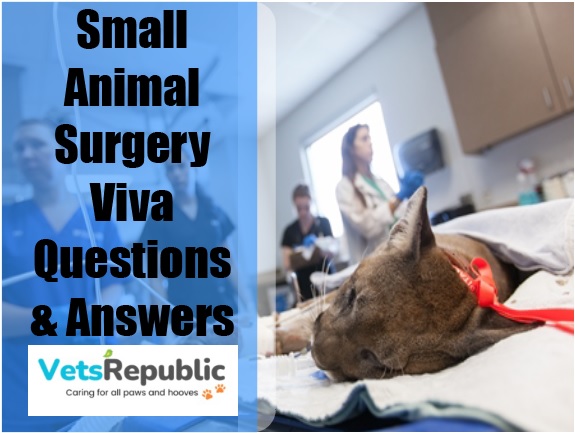In this article, we are going to share with you a list of animal husbandry authentic viva questions and answers. This is a comprehensive list which is for the students who are willing to excel in their viva sessions. We will also provide you with key points for achieving success in your viva sessions of the exams. Each portion is separated by a proper heading to enable students to avoid any confusion while reading these questions and answers. So stay connected.
Principles of Extension
1. What historical factors led to the genesis of Extension in animal husbandry?
Answer: Extension in animal husbandry evolved due to the need for disseminating knowledge, techniques, and innovations among farmers to improve livestock practices and agricultural productivity.
2. Describe the scope of Extension in Animal Husbandry.
Answer: The scope includes disseminating knowledge about animal health, breeding, nutrition, disease prevention, and management practices to enhance livestock husbandry.
3. Explain the components of Extension in Animal Husbandry.
Answer: Components involve advisory services, demonstrations, training programs, and the flow of research-based information.
4. What are the primary aims of Extension in Animal Husbandry?
Answer: Primary aims include enhancing farmers’ knowledge, promoting best practices, increasing agricultural productivity, and facilitating economic growth in rural areas.
5. What is the underlying philosophy of Extension in Animal Husbandry?
Answer: The philosophy revolves around empowering farmers with knowledge and resources for informed decision-making in livestock management.
6. Explain the basic elements of Extension relevant to Animal Husbandry.
Answer: Elements encompass communication, education, participation, and collaboration to facilitate effective knowledge transfer.
7. Elaborate the linkages between research and extension in Animal Husbandry.
Answer: These linkages facilitate the translation of scientific advancements into practical solutions for farmers’ challenges in livestock management.
8. Contrast between Extension Education and Formal Education in the context of Animal Husbandry.
Answer: While formal education follows structured curriculum-based learning, Extension Education focuses on practical knowledge transfer tailored to farmers’ needs.
Extension Educational Psychology
1. How does Educational Psychology influence Extension practices in Animal Husbandry?
Answer: It helps Extension workers understand farmers’ learning processes, motivations, and attitudes, aiding in the design of effective educational programs.
2. Discuss the importance of motivation in Extension Educational Psychology for Animal Husbandry.
Answer: Motivation drives farmers to adopt new practices by understanding their needs and incentives, influencing their readiness for change.
3. How do attitudes affect behavior change in Extension Education for Animal Husbandry?
Answer: Positive attitudes toward new practices lead to favorable behavior changes among farmers, improving livestock management.
4. Explain the application of teaching and learning theories in Extension Education for Animal Husbandry.
Answer: Theories like experiential learning and adult learning principles help design engaging and effective educational programs for farmers.
Rural Development
1. How do Panchayati Raj institutions contribute to rural development in Animal Husbandry?
Answer: They enable local participation and decision-making in implementing livestock development programs, fostering rural development.
2. Discuss the role of Community Development in Animal Husbandry Extension.
Answer: Community Development empowers local communities with knowledge and skills for collective improvement in livestock husbandry.
3. What are the key aspects of Animal Husbandry Development Programs in rural areas?
Answer: These programs focus on improving breeds, healthcare, fodder management, and marketing strategies to enhance rural livelihoods.
4. Explain the evolution of India’s Extension Organization concerning rural development.
Answer: The organization evolved to integrate technological advancements, research outcomes, and community engagement for livestock development.
Extension Education Systems
1. Describe the Training and Visit system in Animal Husbandry Extension.
Answer: It involves periodic training sessions complemented by field visits for disseminating knowledge and demonstrating best practices.
2. Explain the objectives of the Transfer of Technology Projects initiated by ICAR in Animal Husbandry.
Answer: These projects aim to directly transfer scientific advancements to farmers, encouraging technological adoption for enhanced productivity.
3. Enumerate the primary objectives of Animal Husbandry Co-operatives.
Answer: Objectives include collective action, resource access, improved marketing, and mutual support among members.
3. How do Extension educators select and combine teaching methods effectively for Animal Husbandry?
Answer: They consider factors like audience demographics and information nature to determine the most suitable methods for effective knowledge transfer.
Animal Husbandry Co-operatives
1. Outline the principles that underpin Animal Husbandry Co-operatives.
Answer: Principles such as voluntary membership, democratic control, economic participation, and cooperation among cooperatives form the foundation.
2. Discuss the impact of Animal Husbandry Co-operatives on rural communities.
Answer: Co-operatives empower farmers, ensuring fair prices for produce, enhancing market access, and contributing to socio-economic development in rural areas.
Extension Teaching Methods
1. How do audio-visual aids benefit Extension Education in Animal Husbandry?
Answer: They enhance learning by combining auditory and visual stimuli, making complex concepts easier to understand.
2. Explain the relevance of sociological aspects in extension teaching for animal husbandry.
Answer: Sociological aspects address social values, cultural factors, leadership, and social change, impacting farmers’ adoption of new practices.
Communication of Innovation
1. Describe the different types of communication relevant to Animal Husbandry Extension.
Answer: Communication types include interpersonal, group, and mass communication methods utilized in Extension practices.
2. How does the diffusion of innovations theory apply to extension Education in Animal Husbandry?
Answer: It explains the process by which new ideas or practices spread among farmers, emphasizing adopter categories and the adoption process.
Programme Planning and Evaluation
1. Highlight the importance of programme planning in animal husbandry Extension.
Answer: Programme Planning ensures effective resource utilization, targeted interventions, and measurable outcomes for improved livestock management.
2. What are the different methods used in programme planning for nimal husbandry extension?
Answer: Methods include needs assessment, stakeholder analysis, goal setting, and strategy development for effective program implementation.
Livestock Marketing Extension
1. Discuss the role of livestock in various farming systems concerning Livestock Marketing Extension.
Answer: Livestock plays a crucial role in diversified farming systems, contributing to income generation and food security.
2. What are the various types of farming systems relevant to Livestock Products’ Marketing Extension?
Answer: Farming systems include extensive, intensive, and mixed systems, each with distinct livestock management approaches.
Miscellaneous Questions
1. Contrast extension Education with Formal Education in animal husbandry.
Answer: While formal education follows structured curriculums, extension education focuses on practical knowledge transfer tailored to farmers’ needs.
2. Explain the significance of cultural factors in animal Husbandry Extension.
Answer: Cultural factors influence farmers’ attitudes, practices, and acceptance of new techniques, impacting Extension strategies.
3. Describe the Adoption Process concerning the adoption of new practices in Animal Husbandry.
Answer: The process involves stages like awareness, interest, trial, evaluation, and adoption, impacting farmers’ acceptance of innovations.
4. What are the different Adopter Categories according to the Diffusion of Innovations theory?
Answer: Categories include innovators, early adopters, early majority, late majority, and laggards, representing different stages of adoption readiness.
5. Why is Evaluation essential in Animal Husbandry Extension?
Answer: Evaluation assesses the effectiveness, impact, and outcomes of Extension programs, guiding future improvements and resource allocation.
6. How do Social Values influence farmers’ behavior in Animal Husbandry Extension?
Answer: Social Values shape farmers’ perceptions, priorities, and decision-making regarding the adoption of new livestock practices.
Optimizing Viva Success Keys For Veterinary Students
- Prioritize understanding core concepts and principles comprehensively.
- Engage in mock viva sessions or practice with peers to simulate the actual exam environment.
- Analyze case studies and clinical scenarios to apply theoretical knowledge practically.
- Focus on clear and concise communication during viva sessions, ensuring understanding and clarity in your responses.
- Practice active listening to grasp examiners’ questions accurately before responding.
- Practice managing time during viva sessions.
- Consult professors, senior students, or mentors for guidance and advice on viva preparation.
- Implement a regular revision schedule to reinforce learned concepts and prevent forgetting crucial information.
- Cultivate a positive attitude and belief in your abilities.
- Maintain a healthy balance between study and personal life.
Small Animal Surgery Authentic Viva Questions And Answers [All Details]

The Vets Republic website has initiated its journey to convey information that is useful for the veterinarian audience. Anything that we have published here is just for educational purposes. We have not posted any copyrighted content Your continuous support would be highly appreciated.
Disclaimer

This blog post is just for educational purposes and to convey important information to our audience. The content that we are publishing on our website is not collected or plagiarized from any source.. We are just sharing our experience If anyone finds a text that is plagiarized from any source in our articles, please send us an email at Rizqum789@gmail.com and we will remove it within 24 hours.

